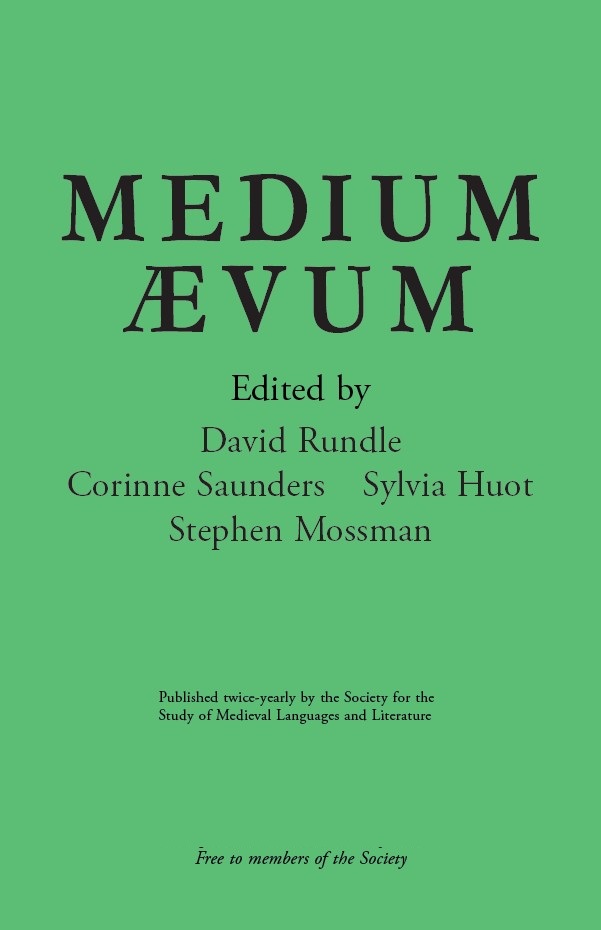Medium Ævum, which first appeared in 1932, is one of the leading international academic periodicals in medieval studies. It is published twice yearly and its present editors are David Rundle, Corinne Saunders, Sylvia Huot, and Stephen Mossman.
Medium Ævum Journal
Main navigation
Out Now: Medium Aevum 93/2. This issue has the following articles:
